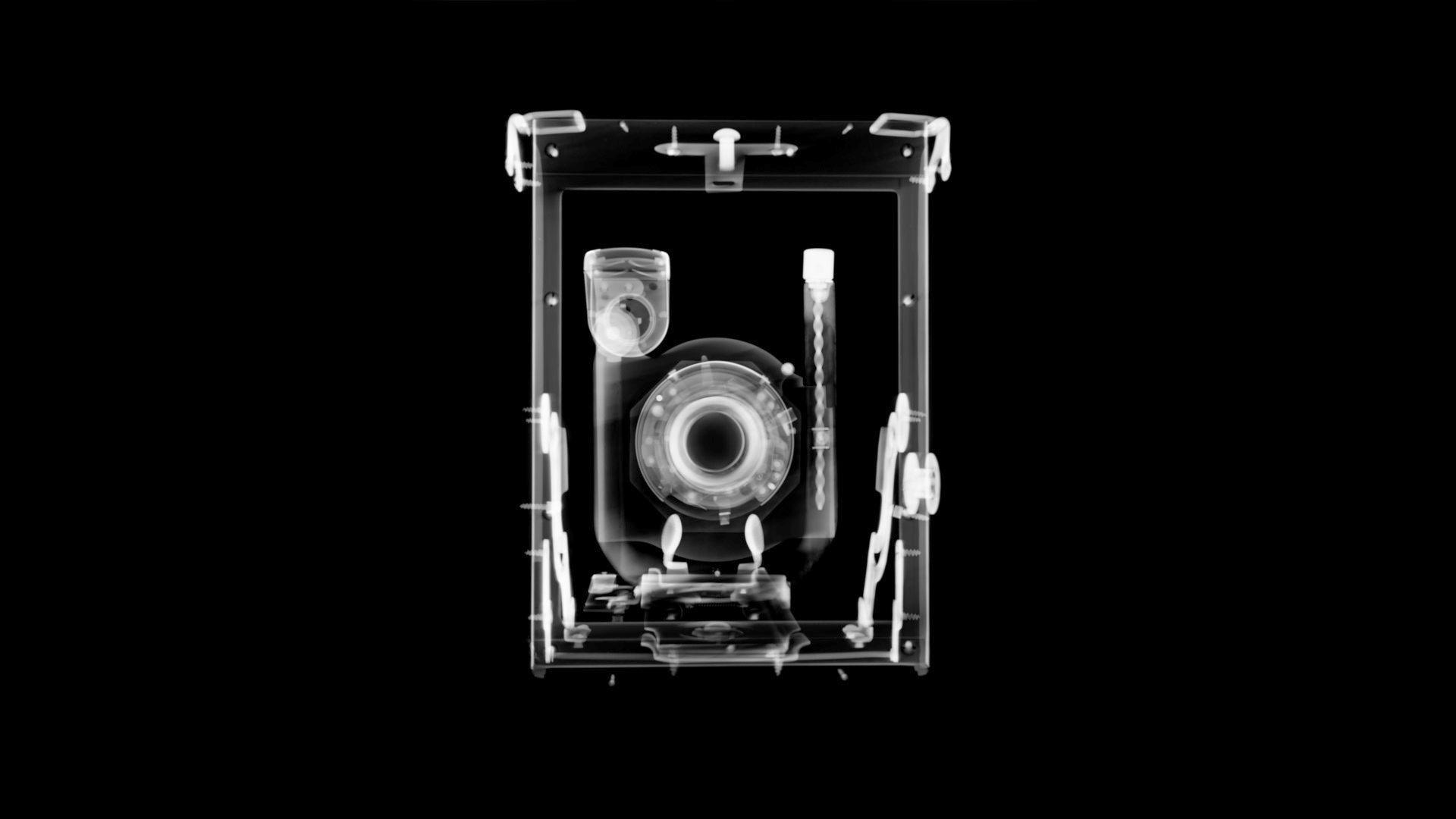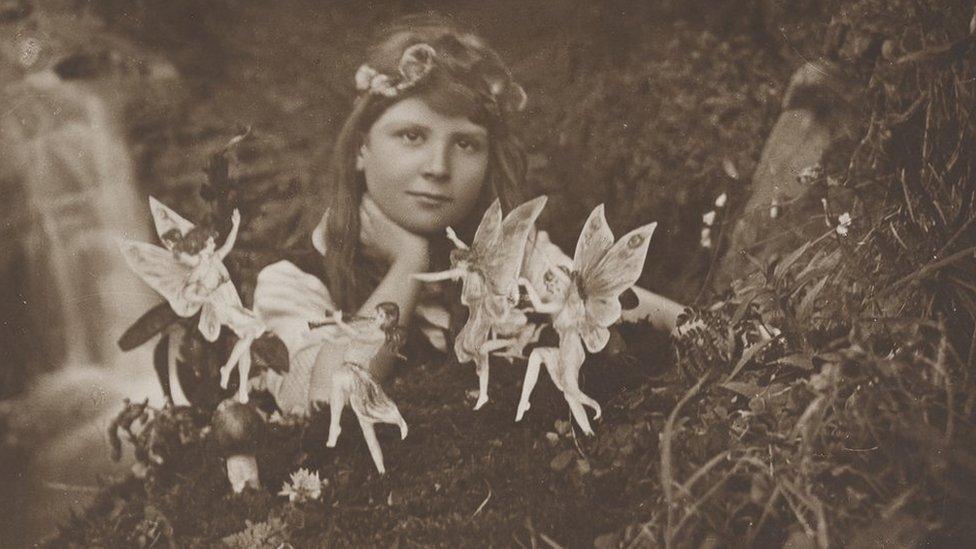Cameras behind famous fairy hoax photos analysed

Frances Griffiths was pictured with what purported to be a band of fairies in images which shocked the world
- Published
Cameras which supposedly snapped a group of supernatural sprites playing with two young girls more than a century ago have been analysed by new scanning technology.
The Cottingley Fairies photographs, taken between 1917 and 1920, depicted the young cousins at the bottom of the garden in the Cottingley area of Bradford with what appeared to be magical creatures.
The photos caused a worldwide sensation at the time, though towards the end of their lives the cousins admitted the first four images were faked - but one said the fifth and final was real.
The cameras are among the first objects in the world to be scrutinised by CT scanners recently acquired by University of Bradford.

Micro CT scan showing the internal construction of the Quarter-plate 'Cameo' camera, used to create the second phase of fairy images between 1918-1920
Ruth Quinn, from Bradford's National Science and Media Museum, said the Cottingley Fairies cameras "show how ordinary people can achieve extraordinary things when coupled with skill and playful creativity".
She said: "Through scanning these objects, we can show the inner workings of how analogue photography works - and the materials which go into making a camera."

Elsie sits in the garden as a gnome dances towards her
Elsie Wright and Frances Griffiths started the legend in 1917 when they told Frances' mother that they had seen fairies in Cottingley Beck.
Greeted with scepticism, Elsie, who was then 16, borrowed her father's camera and returned to the beck to take a photo of nine-year-old Frances with what appeared to be four fairies in the foreground.
A second photo was taken weeks later to bolster the claim, showing Elsie with a dancing gnome.

University and museum staff looking at the camera in the scanner
The pictures came to a wider audience when Sherlock Holmes author Arthur Conan Doyle published them in 1920, believing them to be authentic.
However, in an 1983 interview Elsie confessed the images were a hoax and that the fairies had been created from paper cut-outs and hatpins.
Frances, however, insisted that the fifth and final image was genuine and that the pair had seen fairies in the beck.
Prof Andrew Wilson, of the University of Bradford, said putting the cameras through the scanner was a "highly significant" moment, because of their back story.
He said: "Of course, we didn't find any fairies but I think we did find a little bit of magic - in that these scanners show how we can now look inside objects without disturbing them and see a level of detail that is unsurpassed.
"These new scans allow us to see the hidden workings of the cameras and the magic that sits behind them."
Follow BBC Yorkshire on Facebook, external, X (formerly known as Twitter), external and Instagram, external. Send your story ideas to yorkslincs.news@bbc.co.uk, external
Related topics
Related stories
- Published5 December 2020
